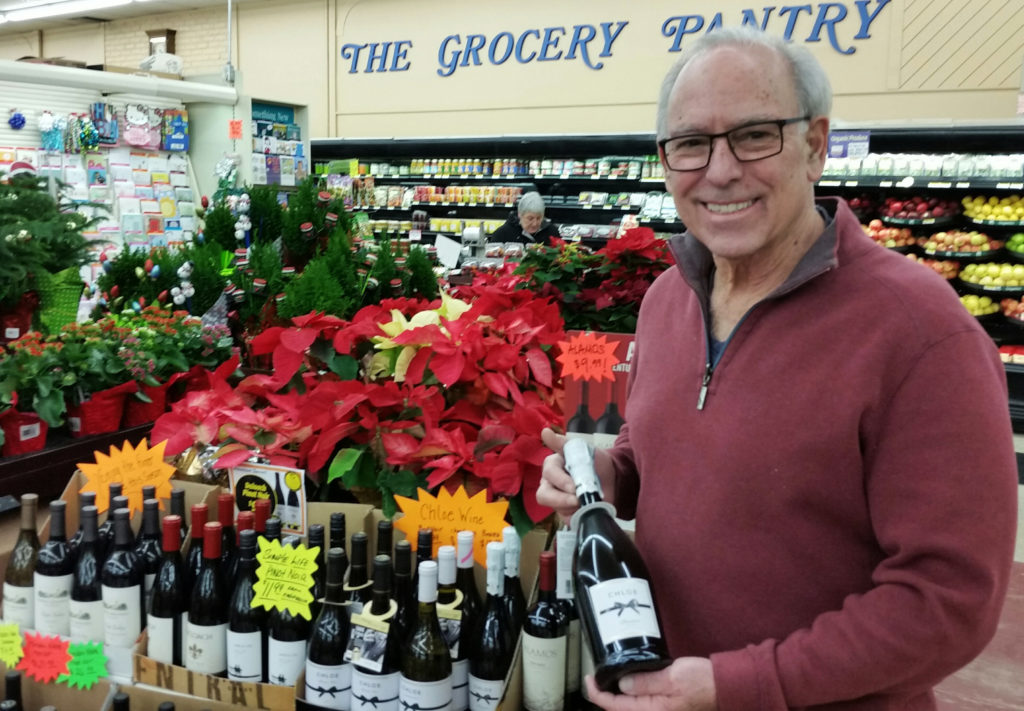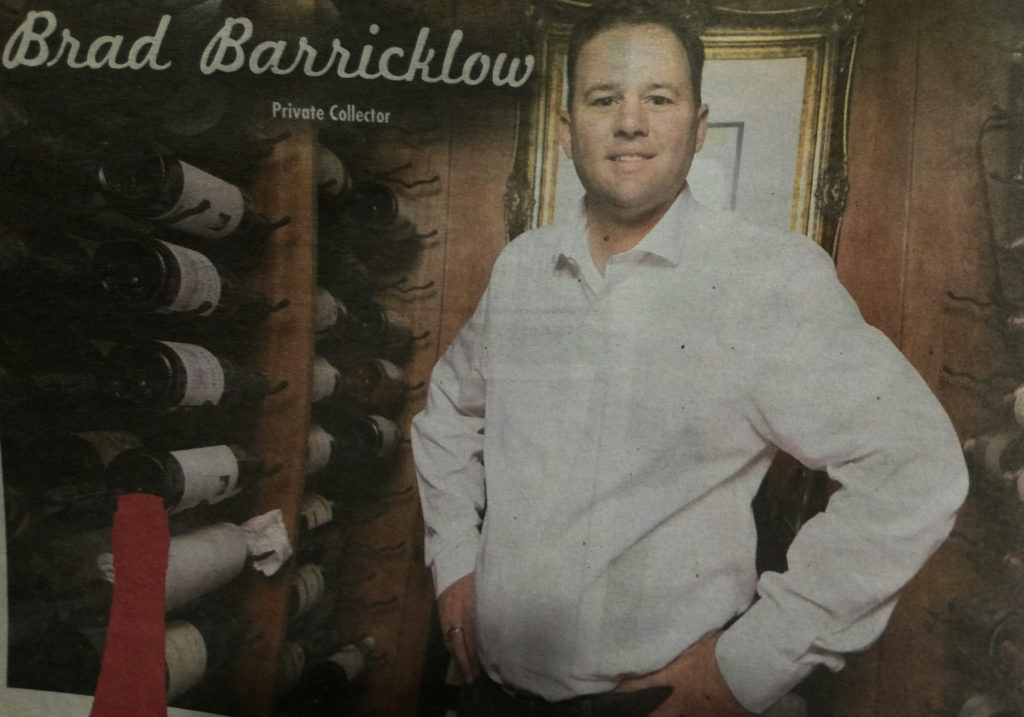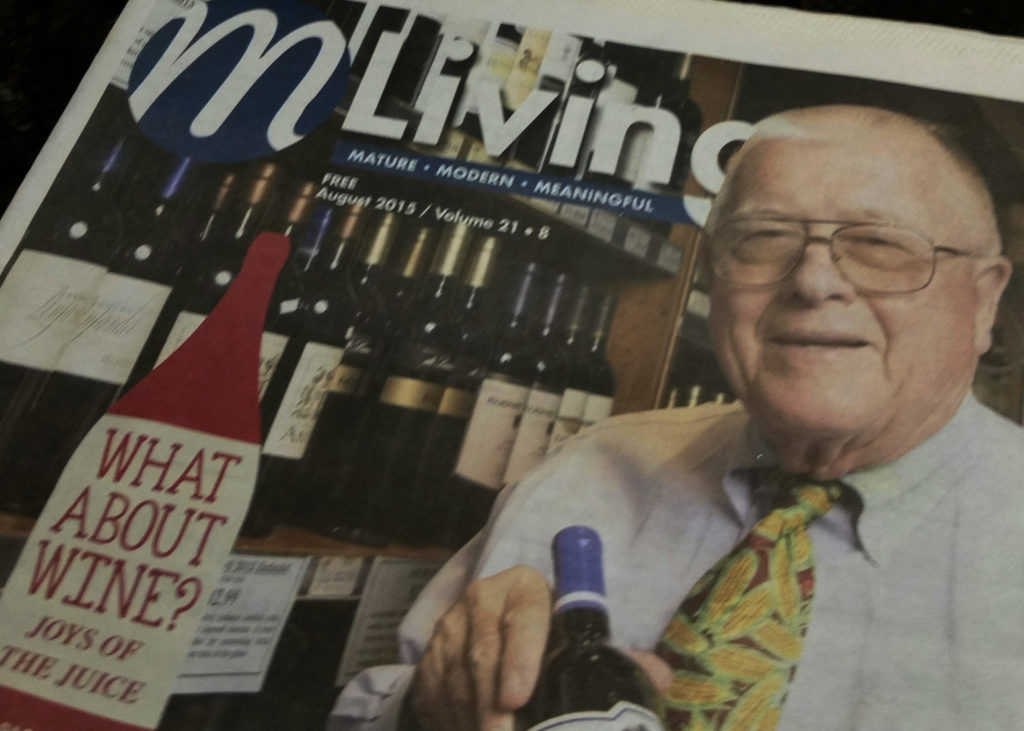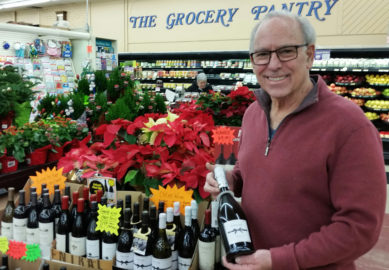By Don Radebaugh…

TOLEDO, Ohio – Renowned American chef, author, and television personality Julia Child once said, “I enjoy cooking with wine; sometimes I even put it in the food.”
For a gal who was known more for her culinary art, her affinity for a fine glass of wine is noteworthy to say the least, and she’s certainly not alone.
“I’ll bet if you Google global wine sales, the numbers would astonish you,” said Jim Sautter, president of Sautter’s Markets. “It’s a multi-billion dollar industry, and there’ll come the day, when it goes beyond that.
“Wine is produced in every state in the Union, even Alaska,” he continued.
Sautter keeps a sharp eye on the worldwide wine market, and for good reason.
“We do a lot of different things at Sautter’s Market, but, even with all the variety we provide, wine sales are a significant chunk of our overall sales. And of course, wine lends itself to other things to go with it…steak, cheese and so forth. If you sell a bottle of wine, chances are the customer is leaving with something else to complement the wine, so there are residual effects with each bottle.”
For wine connoisseurs everywhere, wine seems to mix the perfect blend of sight, taste, feel and fragrance, engaging most of the senses with all the right stuff. It can complement the perfect meal in just the right season or serve as a social tool, enhancing conversations in far away corners of the world. And for some, it’s engrained in the culture.
 “We just got back from Paris…we were there for eight days,” said Dr. Brad Barricklow, who practices Dentistry in Sylvania, Ohio. “You’ll find it on every street corner…Rosé, flowing like royal blood. It’s not white, not red, but a Rosé.”
“We just got back from Paris…we were there for eight days,” said Dr. Brad Barricklow, who practices Dentistry in Sylvania, Ohio. “You’ll find it on every street corner…Rosé, flowing like royal blood. It’s not white, not red, but a Rosé.”
Barricklow also spent four days in Barcelona, Spain just before his Paris adventure and found the wine culture to be quite different.
“It’s funny, in Barcelona, you only find Spanish wines on the shelves. In Paris, as you would guess, nothing but French wines on the shelves, each country specific to its own culture. That said, it’s possible that they just don’t know what else is out there.”
And believe you me, there’s a lot out there. In fact, while wine has strong roots in old world Europe and the United States, wine production is growing exponentially around the world.
“I would say the biggest impact in the last 10 years or so are the wines coming out of Australia, South Africa, New Zealand, South America, as well as the Spanish wines, even the Chilean wines,” Sautter said.
“The quality is excellent and they’re reasonably priced. And that’s caused a rumble with the Californians and the Europeans. The newer production is coming from places where the labor’s cheaper…the land is cheaper, so they can produce at a cheaper price. When they keep the production costs down, they can also reduce the shipping costs. I mean, you go buy an acre of land in Napa Valley compared to somewhere else deep in the heart of Chili. The Australians, the Spanish, the Chileans…they’re dumping a lot of wine in the United States.”
Sautter acknowledges that he pays the same wholesale price that everyone else does, but there are ways to keep his retail prices down. To keep his prices competitive, Sautter stocks as much as a quarter million dollars of wine at any given time.
“Wine prices are controlled by the state. Whether it’s Walmart or Costco, or whoever, we all pay the same price on any given day. But if I can buy wine when the price is down by purchasing the entire pallet, I buy it. Buy low and sell low. If I buy the whole pallet, I can sell it at a lower price, and continue to sell it at that low price, even if the wholesale price went up in the meantime.”
Keeping an eye on wine around the world means paying attention to trends that keep customers coming back for more.
“The consumption of wine has always been affected by trends,” Sautter continued. “One thing leads to another. I go back to my college days when we were drinking Ripple, Annie Green Springs…all those cheap wines. All that experimentation created the desire that led to something else. Pretty soon, you’re graduating to more sophisticated wines.”
According to Sautter, what started as a mistake, turned into one of the most successful wine debuts of all time.
“The white Zinfandels had a huge impact when they came around. They took the skins out too soon and it gave the wine a more blush look, rather than deep red. Kind of like an Easter egg when you don’t leave it in long enough. But people loved it…it caught on and got more people drinking wine than ever before, and it started out as a mistake. Then, in the 90s, they left the skins in longer for a deeper red wine.
“From there, people graduated to something dryer…then to the Merlots…that was a buzzword for a long time…trends that led to another, and then to another. Red wines and Rosés are very popular. But everything started as a trend that led to something else. And each trend along the way served its purpose and got people drinking wine who may have never tried it otherwise.”
There’s yet another new trend expanding over the globe, and it gets right to the heart of it all, literally.
“When the family doctor is telling you to drink two glasses a day for the antioxidants, it’s prompted people into drinking wine who wouldn’t have before,” Sautter said. “Doctors are literally telling their patients that red wine is good for the heart. I get customers coming in asking me, ‘which wine should I drink for my heart?’ It’s a trend that has helped people graduate to the red wines. The health angle has had a big impact.”
Despite the worldwide invasion from wine producers, the U.S. is still the largest wine consuming nation in the world since 2010. California’s 225 million cases shipped within the U.S. in 2014 represent a 60 percent share of the U.S. wine market.
“They grow a lot of grapes in California. There’s a lot of juice out there, and they have to do something with it, so they sell it on the open market for other producers to make their own wines. They didn’t grow the grapes but it doesn’t stop them from putting their own label on it. There are so many different red blends on the market now, more than a hundred different red blends on the shelf.”
Sautter says that despite what many think, the wines in his store have a shelf life.
“When you mass-produce wine like they do now, most of the wines in the grocery stores are made to drink, not to age. White wines and the cheap reds aren’t meant for aging, unlike a good quality, well-constructed red wine, which can maintain its quality over the decades.”
Terry Kretz, the district manager for Mainstreet Ventures, which oversees operations at four Toledo-area restaurants including Ciao, Zia’s, Revolution Grille and Real Seafood Company, says there’s not a lot of profit in wine but it provides the perfect complement to the meal.
“Of all the beverages, wine is the least gross margin but nothing enhances the meal more, much more so than liquor, pop or beer,” said Kretz.
“Wine’s not cheap and you can only pass so much on to the consumer. But in fine dining, especially Italian, it’s critical to have the right wine available to pair up with the right meal. Whatever we order, we move, and of course it depends on the season as to what we purchase. In the warmer months, especially when it’s hot outside, we sell more white wines…something lighter, crisper. In the winter, just the opposite…people want a heavier, red wine.
“It makes a difference in what they’re eating too. We sell a lot more reds with steak, and more white with seafood or olive oil style pastas. Italian foods bring a lot of the reds.
“What we’ve noticed at the Revolution Grille…one that’s coming back is Melbac, an Argentinean wine.”
Known for its plump dark fruit flavors and smoky finish, Malbec wine offers a great alternative to higher priced Cabernet Sauvignon and Syrah. The main fruit flavors in a glass of Argentinean Malbec are blackberry, plum and black cherry. That is, unless the Malbec is produced in France where it’s often described as “leathery with flavors of tart currant, black plum and savory bitterness often described as green.” French Malbecs have higher acidity which attributes to flavors described as black pepper and spice. Because of their moderate tannin and acidity with lower alcohol, French Malbec wines tend to age longer.
Jim Mosier, once the wine and beer manager of Andersons Market in Sylvania, says that this is the “best time in history to buy wine.”
“There is more good wine on the market than ever before,” said Mosier. “And I’m talking about quality, inexpensive wine in the 10-15-20 dollar range. And of course, it’s not just the U.S., even though we know it’s coming now from all 50 states. The Greek wines are becoming very popular…they’re world-class, first-rate and affordable.”
Mosier also touches on some of the science behind the bottle.
“The screw-top enclosure is really on the increase. And there’s a science to that. And I’m not talking about all the old favorites out of the brown paper bag…the Ripples and Mad Dog 20-20s…I’m talking quality wines coming out with the screw-top enclosures. Cork isn’t going away, but since most wine purchased in the U.S. today is not meant for long term storage, you’re seeing the screw-top on more and more good, quality wines.
“One of the most popular red wine grapes are the Melbacs coming out of Argentina. The Chilean wines have really turned around, especially the reds…the Cabernet Sauvignons, the Merlot, all very nice, and very popular. There’s a Zweigelt out of Austria that’s wonderful. If you like Pinot Noir, you’ll love the Zweigelt.
“But even with all the imports, it’s amazing how many great wines there are right here in the states. Ohio is certainly well known for wineries. There’s a very popular Gruet out of New Mexico; I mean, who would have thought it. And some of the best Riesling wines are coming out of the Finger Lakes (N.Y.) region.”
While Mosier agrees that wine offers the perfect fit with food, he says it also serves as a “social lubricant.”
“Visually, it’s beautiful in glass with wonderful aroma outside the glass. It’s so many different things varying from red, white, light, fragrant, crisp, dark, rich…it’s all there and wonderful on the palate. And once you start tasting it, you’ll find out that not one size fits all. It’s all about personal preference. It’s mood…it’s attitude. It’s so many things. And there’s so much to learn about it. The more you learn, the more you realize how much more you have to learn.”

Walt Churchill, of Churchill’s Market (Maumee and Perrysburg Ohio), says that inexpensive, yet quality wines have never been more abundant.
“There is more good wine on the market than ever before,” said Churchill. “Quality, inexpensive wine in the 10-15-20 dollar range. World competition has changed dramatically from the days when France and Italy ruled and many wine snobs are totally shocked with the quality of inexpensive wines today.
“Now we see so many countries producing, but even with all the imports, it’s amazing how many great wines there are right here in the states. Ohio is certainly well known for wineries, now having more than 200.
“Choosing wine is all about personal preference. Cuisine is changing and more consumers are knowledgeable about wine and the interplay with different foods. No longer is wine just red or white; it’s attitude…a myriad of varieties, brands and labels all waiting to be tried.”
Barricklow says that experiencing different wine cultures around the world is interesting and fun, and if it’s variety you’re after, then America should suit your style.
“In the average restaurant in Toledo alone,” Barricklow said, “you’ll find five Californians, two French, two Chilean, and Australian and more…a really nice mix from several countries. Wine is the ultimate product, a craft just as much as beer…meant to be enjoyed with food.
“In summer, when it’s hot, you want a crisp Rosé or a crisp white…to go with the summer foods. Big dark reds for the winter to go with red meats. It’s paired with specific foods.
“Wine is huge here in the states, but I don’t think it’s engrained in our culture quite like it is in France or Spain. It’s as common as water in Europe. You can buy a bottle of wine for $3.50. They don’t ask; they just bring out wine glasses…even for the kids. It’s so intertwined in their culture…intertwined in their experience. It’s a very relaxed atmosphere. Fortunately, they don’t get in cars and drive off either. Most don’t have a car.”
U.S. Wine Exports
U.S. wine exports, 90 percent from California, reached $1.5 billion in winery revenues in 2014. Volume shipments were 443 million liters or 49.3 million cases. The European Union was the top destination for U.S. wine exports, accounting for $518 million; followed by Canada, $487 million; Japan, $101 million; China, $71 million; Hong Kong, $69 million; Mexico, $24 million; South Korea, $22 million.


Don,
I’ll bet you knew two Jim Saut(t) ers 🙂
Wes